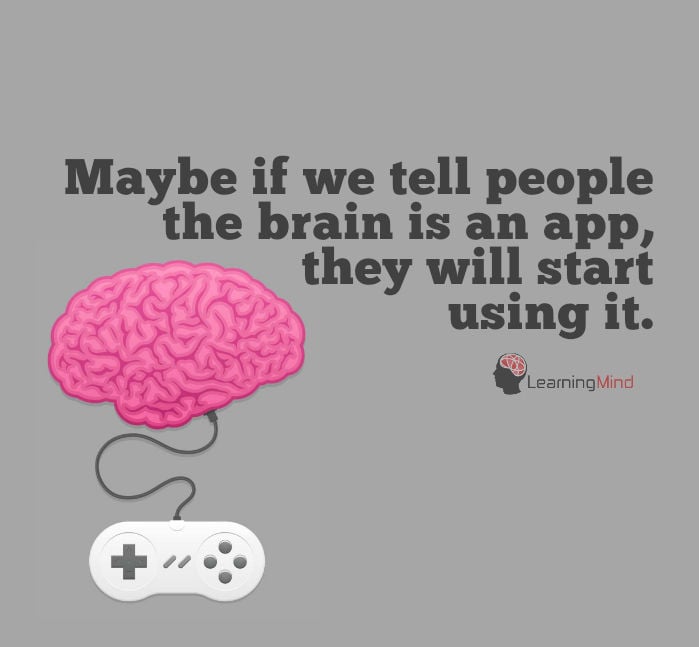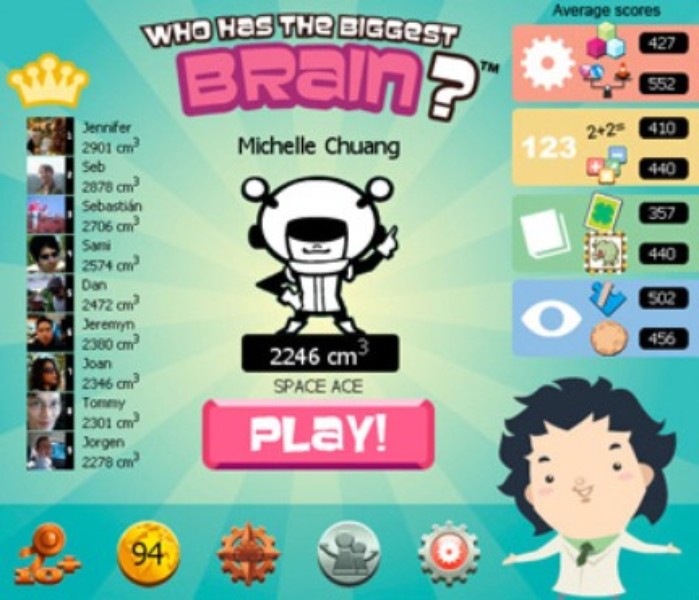


He studied computer science at Stanford while interning at Apple, then embarked on a master’s degree at Stanford, where he joined the Persuasive Technology Lab.
WHO HAS THE BIGGEST BRAIN APP IPHONE SOFTWARE
Raised in the Bay Area by a single mother employed as an advocate for injured workers, Harris spent his childhood creating simple software for Macintosh computers and writing fan mail to Steve Wozniak, a co-founder of Apple. Harris, Elman says, is offering Silicon Valley a chance to reevaluate before more-immersive technology, like virtual reality, pushes us beyond a point of no return.Ī ll this talk of hacking human psychology could sound paranoid, if Harris had not witnessed the manipulation firsthand. Elman compares the tech industry to Big Tobacco before the link between cigarettes and cancer was established: keen to give customers more of what they want, yet simultaneously inflicting collateral damage on their lives. Other people, including Adam Alter, a marketing professor at NYU, have championed theses similar to Harris’s but according to Josh Elman, a Silicon Valley veteran with the venture-capital firm Greylock Partners, Harris is “the first putting it together in this way”-articulating the problem, its societal cost, and ideas for tackling it. Joe Edelman-who did much of the research informing Time Well Spent’s vision and is the co-director of a think tank advocating for more-respectful software design-likens Harris to a tech-focused Ralph Nader. “There is a way to design based not on addiction.” “There needs to be new ratings, new criteria, new design standards, new certification standards,” he says. He is rallying product designers to adopt a “Hippocratic oath” for software that, he explains, would check the practice of “exposing people’s psychological vulnerabilities” and restore “agency” to users. Under the auspices of Time Well Spent, Harris is leading a movement to change the fundamentals of software design. A “Hippocratic oath” for software designers would stop the exploitation of people’s psychological vulnerabilities. The attention economy, which showers profits on companies that seize our focus, has kicked off what Harris calls a “race to the bottom of the brain stem.” “You could say that it’s my responsibility” to exert self-control when it comes to digital usage, he explains, “but that’s not acknowledging that there’s a thousand people on the other side of the screen whose job is to break down whatever responsibility I can maintain.” In short, we’ve lost control of our relationship with technology because technology has become better at controlling us. That itch to glance at our phone is a natural reaction to apps and websites engineered to get us scrolling as frequently as possible. While some blame our collective tech addiction on personal failings, like weak willpower, Harris points a finger at the software itself. As the co‑founder of Time Well Spent, an advocacy group, he is trying to bring moral integrity to software design: essentially, to persuade the tech world to help us disengage more easily from its devices. Harris is the closest thing Silicon Valley has to a conscience. “It doesn’t have to be the all-or-nothing choice,” Harris told me after taking in the arts-and-crafts scene. Despite the cheerful summer-camp atmosphere, the event was a reminder of the binary choice facing smartphone owners, who, according to one study, consult their device 150 times a day: Leave the WMD on and deal with relentless prompts compelling them to check its screen, or else completely disconnect. I followed him into a spacious venue packed with nearly 400 people painting faces, filling in coloring books, and wrapping yarn around chopsticks.
WHO HAS THE BIGGEST BRAIN APP IPHONE DOWNLOAD
Listen to the audio version of this article: Download the Audm app for your iPhone to listen to more titles.


 0 kommentar(er)
0 kommentar(er)
